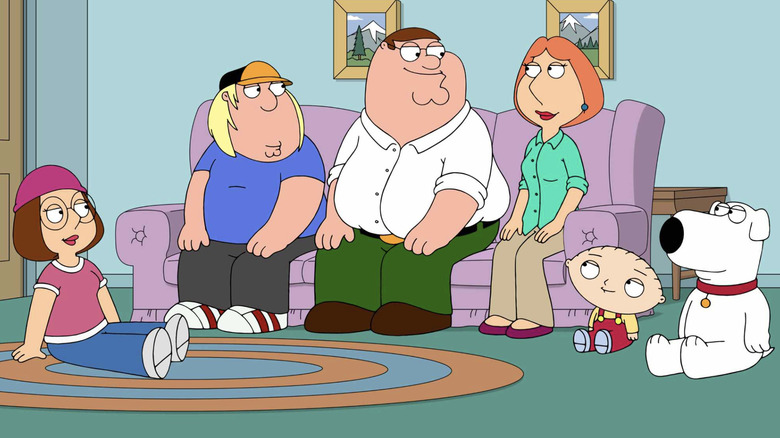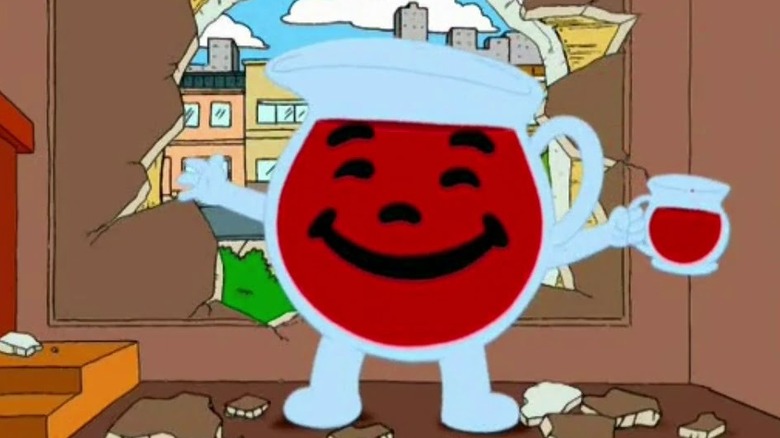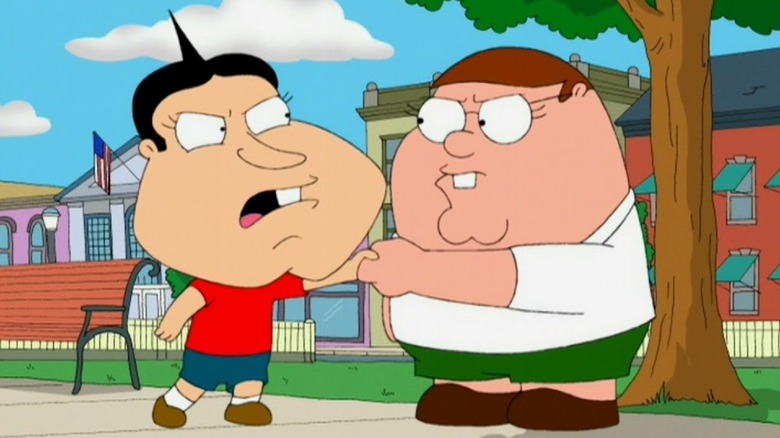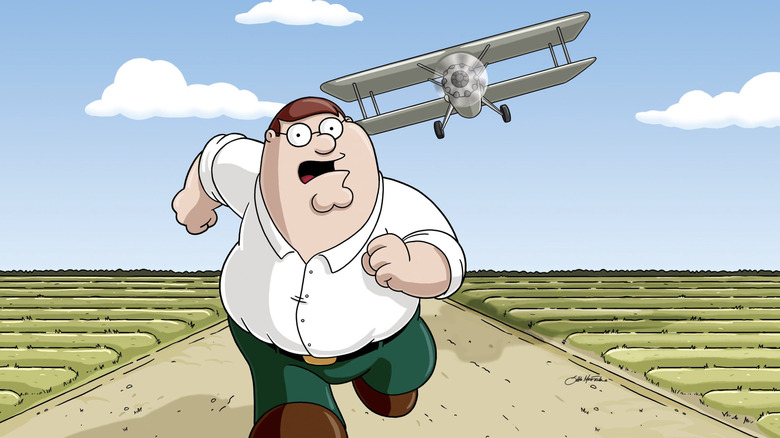The 3 Family Guy Episodes Written By Series Creator Seth MacFarlane
A common misconception among more casual "Family Guy" fans is that creator Seth MacFarlane is personally responsible for every single creative decision. Although he voices many of the characters, his presence in the writers' room is a lot lighter than one would think. He's mentioned in interviews that he hasn't written for "Family Guy" since around 2009, and even before that, he only officially wrote the scripts for three episodes. That's right: only three episodes in the show's entire 400+ episode run were penned by MacFarlane.
Of course, as any writer for a long-running sitcom will tell you, the writing for these shows is very collaborative. There'll often be one writer who receives credit for the episode, but the script will typically go through multiple revisions from the rest of the staff. I know from interviews with staff writers from "Rick and Morty" and "Futurama" that it's often hard for the staff to keep track of who wrote what joke and who exactly came up with each individual idea. (When it comes to the show's worst-ever episodes, that ambiguity is probably a relief.)
To say that Seth MacFarlane only ever wrote three episodes is most likely an understatement of his creative contribution to the series; however, the fact remains that he's only gotten main writing credit for three episodes: "Death Has a Shadow," "Family Guy Viewer Mail #1," and "North by North Quahog." So, how were they?
'Death Has a Shadow' was the show's pilot
Seth MacFarlane wrote the first ever episode of "Family Guy," and he pretty effectively set the tone for its pre-cancellation era. Sure, there are plenty of early-series jitters here that would later be done away with — Meg is a completely different character here even accounting for the voice actor change, and most of Peter's friend group would be written out — but for the most part, it feels like just a regular early-season episode.
Maybe the most interesting part of "Death Has a Shadow" is the way it casually sets itself apart from "The Simpsons" even as it's clearly inspired by it. The pilot introduces an evil talking baby, a wise talking dog, and the somewhat-jarring cutaway format within the first few minutes, and just expects the audience to get on board. It has a type of confidence shared by the "Futurama" pilot from the same year, where you can see the writers' learning from that awkward first season of "The Simpsons" and trying their best to hit the ground running.
Although the pilot is a few people's favorite episode of "Family Guy," it is probably one of the best-remembered episodes of the series, mainly because "Family Guy" would return to the episode in 2011's "Back to the Pilot," offering fans a fun reflection on how much the series (and the world) changed since that first episode aired. "Death Has a Shadow" is not the best MacFarlane-penned episode, but it's hardly a bad start to the show.
'Family Guy Viewer Mail #1' is a lot of fun
Although "Family Guy" would never have a yearly anthology tradition like "The Simpsons" did with their Treehouse of Horror episodes, this season 3 installment was one of their early attempts to try something similar, and it worked out pretty great. The first story is about Peter getting three wishes from a genie and handling it with all the wisdom we know he's capable of; the second one's about the family getting superpowers and running amok with them; the third one is an adorable "Little Rascals" homage where we get to see the adult "Family Guy" characters back when they were chubby-cheeked children.
No segment outstays its welcome, and the show would continue to do the occasional anthology episode for the rest of its run. I don't think anything here quite lives up to season 7's "Three Kings," which uses its three-in-one format to give us parody segments of Stephen King's "Misery," "Stand By Me," and "Shawshank Redemption," but I'm not sure that episode would've even happened if "Viewer Mail #1" hadn't been so well-received in the first place.
'North By North Quahog' was the first episode after the show was renewed
In addition to including a fun parody of Alfred Hitchcock's best film, the season 4 premiere also featured perhaps the show's best dig at the Fox network. After the show spent nearly four years off the air, "North by North Quahog" begins with Peter walking into the house and announcing they've been canceled. When Lois asks if there's any hope Fox might change their mind and put them back on TV, Peter answers:
"We've just got to accept the fact that Fox has to make room for terrific shows like 'Dark Angel,' 'Titus,' 'Undeclared,' 'Action,' 'That '80s Show,' 'Wonderfalls,' 'Fast Lane,' 'Andy Richter Controls the Universe,' 'Skin,' 'Girls Club,' 'Cracking Up,' 'The Pits,' 'Firefly,' 'Get Real,' 'Freaky Links,' 'Wanda at Large,' 'Costello,' 'The Lone Gunmen,' 'A Minute with Stan Hooper,' 'Normal Ohio,' 'Pasadena,' 'Harsh Realm,' 'Keen Eddie,' 'The Street,' 'American Embassy,' 'Cedric the Entertainer,' 'The Tick,' 'Louie,' and 'Greg the Bunny.'"
The joke is that all those shows were quickly canceled; the early 2000s were a period of Fox executives making a series of terrible decisions, and apparently Seth MacFarlane really wanted to make sure everyone knew just how inept they'd been. Much like "Futurama" years later, "Family Guy" got the last laugh.
Outside of that opening, the episode takes a cue from "Death Has a Shadow" and goes about business as usual; Peter gets into some whacky shenanigans in the A-plot while Brian and Stewie try their hands at babysitting Chris and Meg in the B-plot. It's interesting just how much the definition of a "normal episode" had changed since 1999; by season 4, "Family Guy" had figured out how well Brian and Stewie worked together as a comedic duo. (Back in season 1, they were more likely to pair up Brian with Peter, while Stewie would be busy trying to kill Lois again.) MacFarlane basically got to write two different pilots for "Family Guy," and they both did a lot to establish the new norms of the series.



